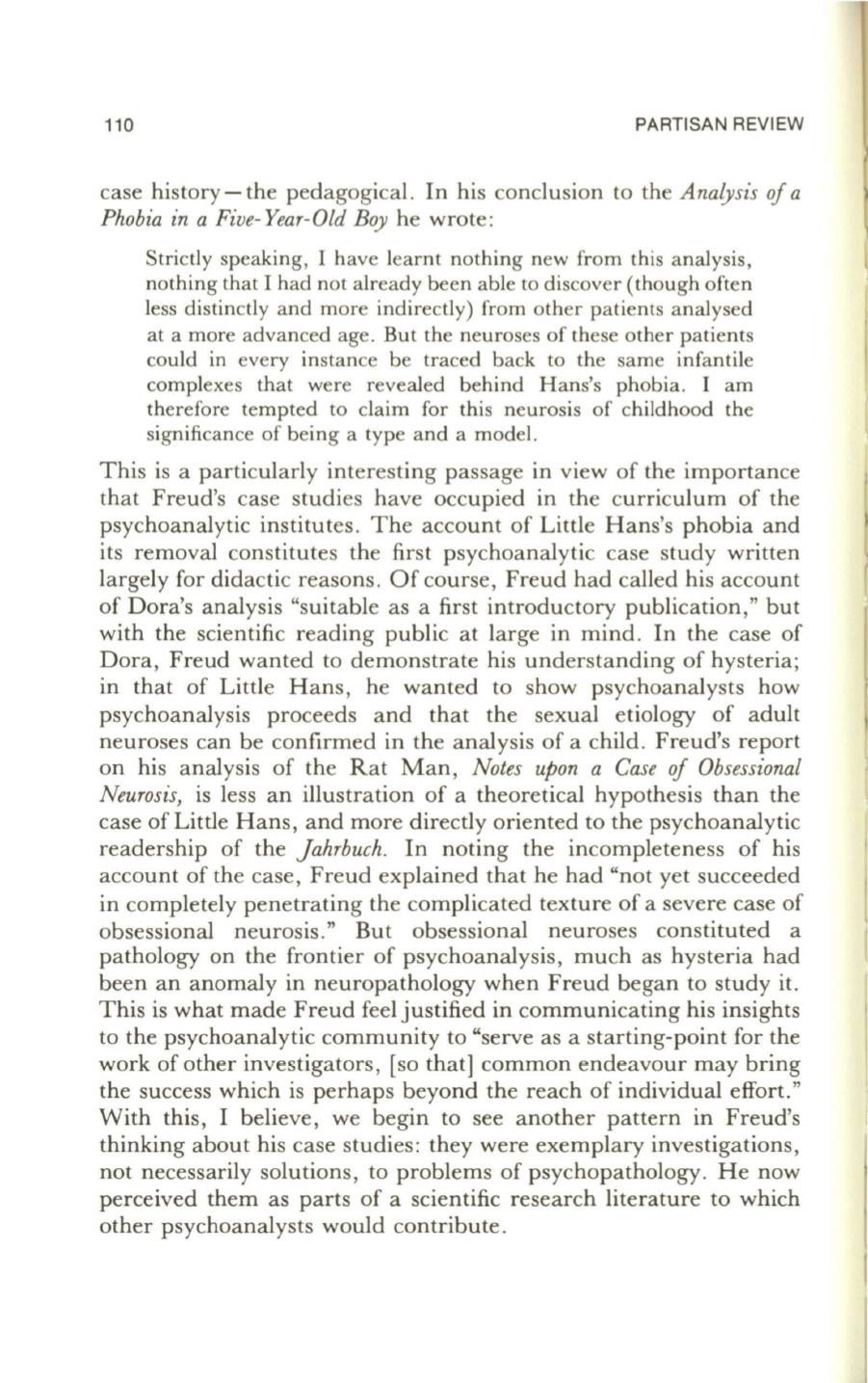
110
PARTISAN REVIEW
case history - the pedagogical.
In
his conclusion to the
Analysis of a
Phobia in a Five- Year- Old Boy
he wrote:
Strictly speaking, I have learnt nothing new from this analysis,
nothing that I had not already been able to discover (though often
less distinctly and more indirectly) from other patients analysed
at a more advanced age. But the neuroses of these other patients
could in every instance be traced back to the same infantile
complexes that were revealed behind Hans's phobia. I am
therefore tempted to claim for this neurosis of childhood the
significance of being a type and a model.
This is a particularly interesting passage in view of the importance
that Freud's case studies have occupied in the curriculum of the
psychoanalytic institutes. The account of Little Hans's phobia and
its removal constitutes the first psychoanalytic case study written
largely for didactic reasons . Of course, Freud had called his account
of Dora's analysis "suitable as a first introductory publication," but
with the scientific reading public at large in mind .
In
the case of
Dora, Freud wanted to demonstrate his understanding of hysteria;
in that of Little Hans, he wanted to show psychoanalysts how
psychoanalysis proceeds and that the sexual etiology of adult
neuroses can be confirmed in the analysis of a child. Freud's report
on his analysis of the Rat Man,
Notes upon a Case
of
Obsessional
Neurosis,
is less an illustration of a theoretical hypothesis than the
case of Little Hans, and more directly oriented to the psychoanalytic
readership of the
Jahrbuch.
In
noting the incompleteness of his
account of the case, Freud explained that he had "not yet succeeded
in completely penetrating the complicated texture of a severe case of
obsessional neurosis." But obsessional neuroses constituted a
pathology on the frontier of psychoanalysis, much as hysteria had
been an anomaly in neuropathology when Freud began to study it.
This is what made Freud feel justified in communicating his insights
to the psychoanalytic community to "serve as a starting-point for the
work of other investigators, [so that] common endeavour may bring
the success which is perhaps beyond the reach of individual effort."
With this, I believe, we begin to see another pattern in Freud's
thinking about his case studies: they were exemplary investigations,
not necessarily solutions, to problems of psychopathology. He now
perceived them as parts of a scientific research literature to which
other psychoanalysts would contribute.


